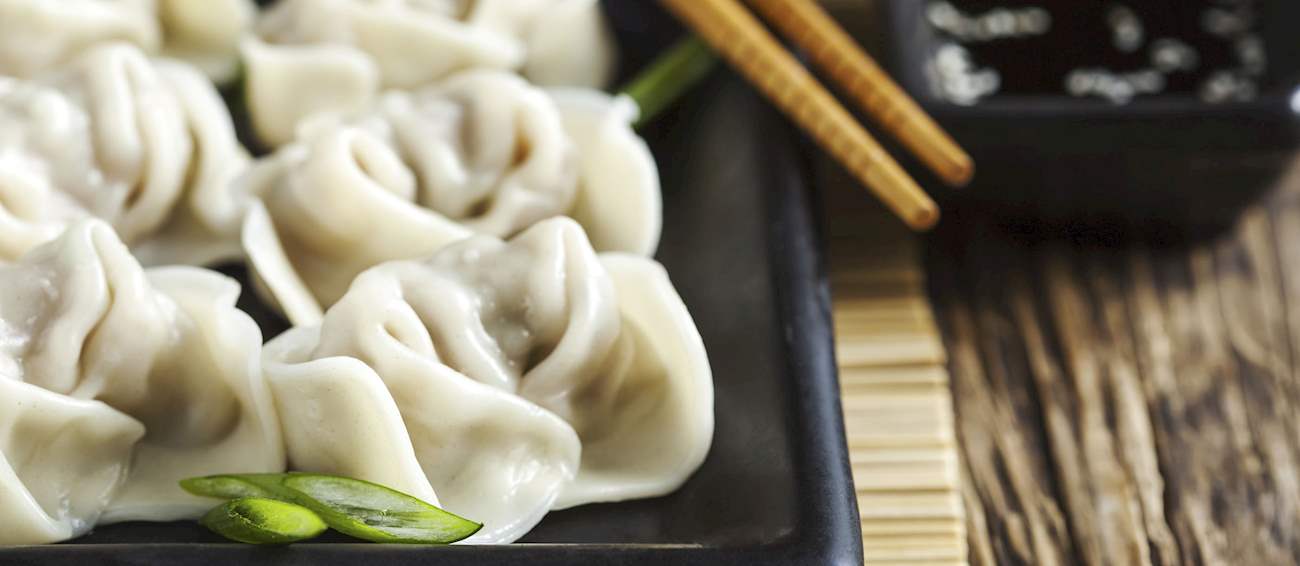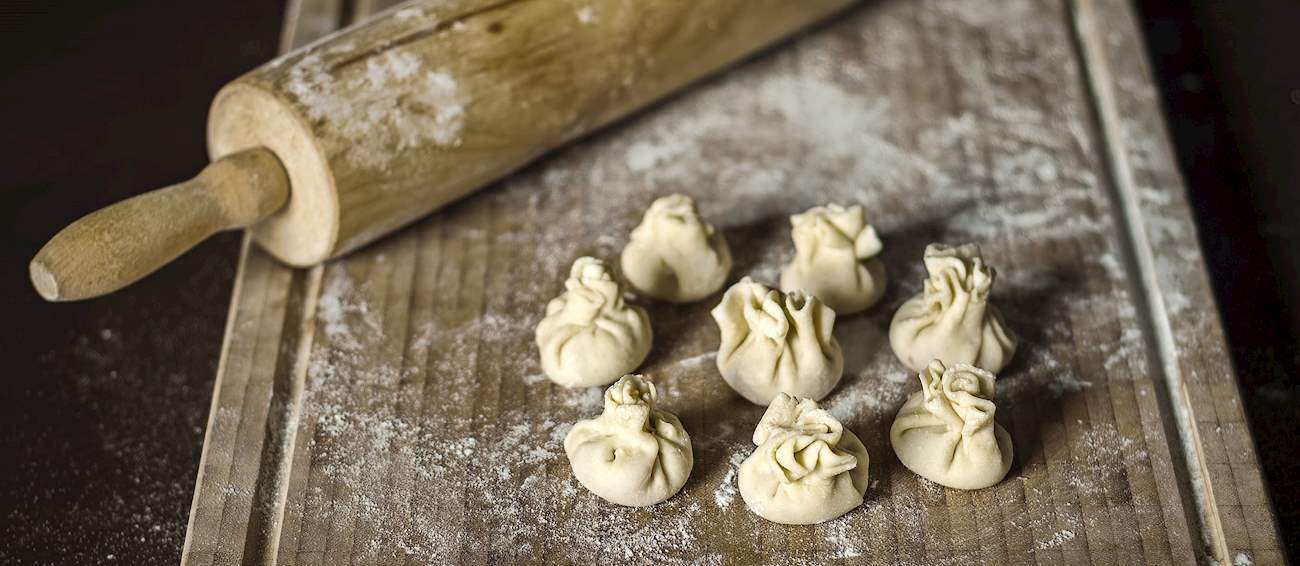Wonton
(Yúntūn, Húntun, Chao shou, Bianshi, 餛飩, 雲吞, 馄饨, 云吞)
Often referred to as the Chinese ravioli, wontons are a variety of thin-skinned dumplings with meat, seafood or vegetable filling enclosed in tender wheat dough wrappers. Many sources suggest that the origins of wontons date back to the Han dynasty era, when they used to be prepared for the Chinese ancestor worship rituals as offerings to the spirits of the deceased.
As the Han era concluded, circa 220 CE, the northern Chinese farmers who had long grown wheat discovered they could ground this grain into flour and knead it with water. From this practice emerged an entire world of new dishes known as bing, which was a collective name for steamed breads, grilled flatbreads, noodles, and various dumplings.
These dishes soon became so popular they were sold anywhere from river boat food vendors to the streets, enjoyed both by royalty and the common folk. Read more
Over time, wontons have evolved and spread from Northern China throughout the country and beyond. Traditionally prepared during the Winter Solstice Festival, they were cooked in chicken broth until almost translucent and enjoyed as a heartwarming soup typically flavored with white pepper, sesame, and oyster oil.
Nowadays, wontons are available in numerous varieties. In the North, they are most often stuffed with pork or lamb, while the classic Shanghainese filling includes minced pork and bok choy cabbage, flavored with the wild green called shepherd’s purse.
Further to the south, people make their wontons with egg wrappers and fill them with a combination of pork and shrimp, while in Cantonese cuisine, wontons are often served as an appetizer, deep-fried and smothered in sweet-and-sour sauce. In the neighboring province of Fujian, they are better known as bianshi and are sometimes stuffed with fish paste.
The so-called three treasure wontons, also known as Sanxian huntun or wuxi Sanxian wontons are stuffed with pork, dried shrimps, and pickled vegetables, and typically served in a spicy tofu and egg soup. Sichuan pork wontons are called chao shou, and they are traditionally served either in qing tang, a clear vegetable broth flavored with cilantro and other leafy greens, or in a spicy hong you chili oil sauce.
Hong Kong-style wontons are filled with shrimp and lightly seasoned pork flavored with ginger, yellow chives, soy sauce, and sesame oil.







